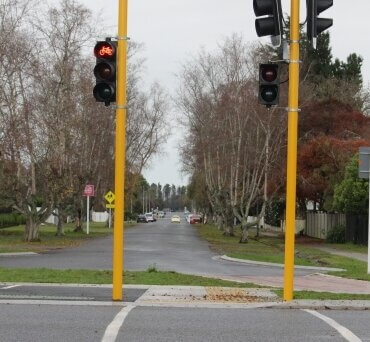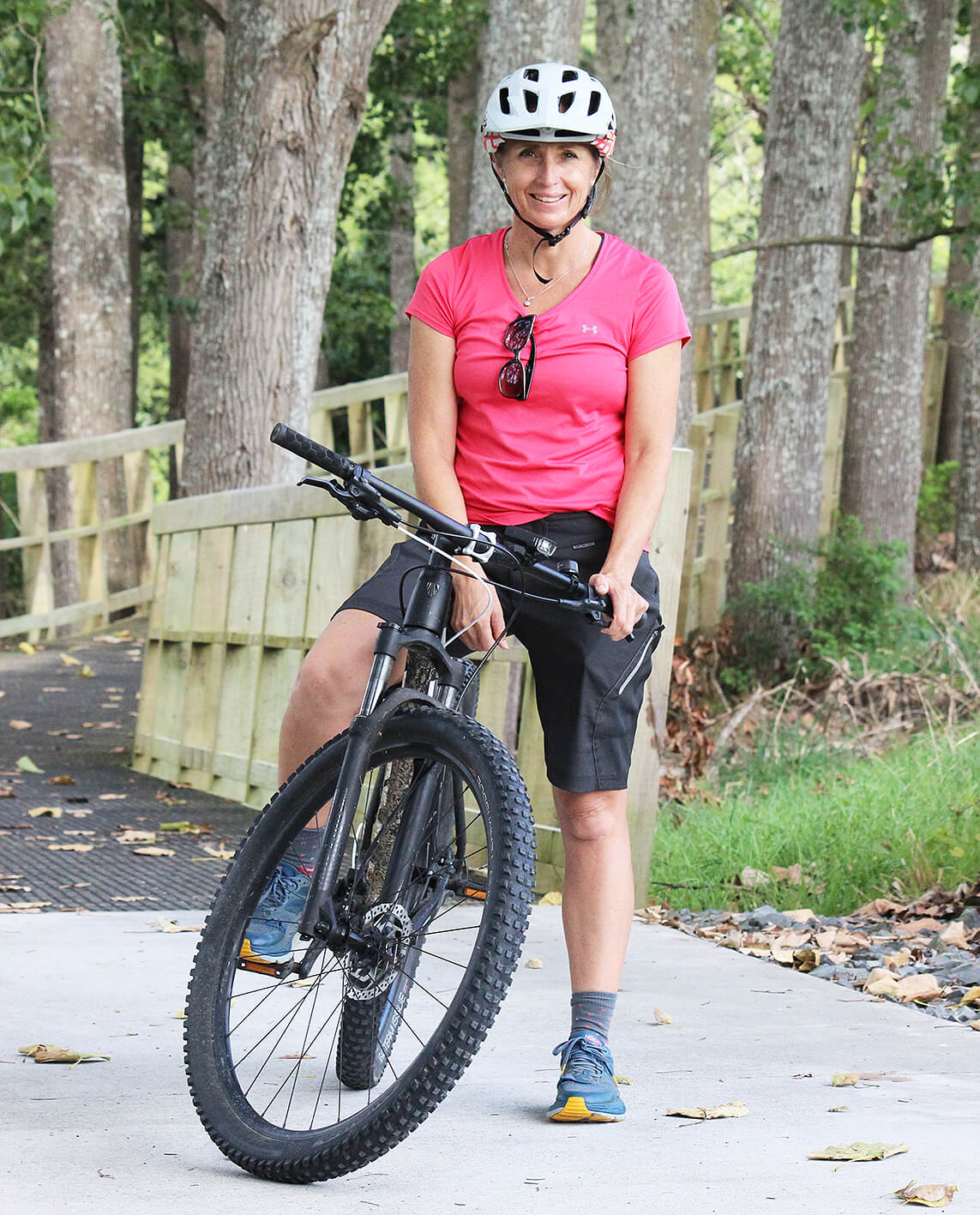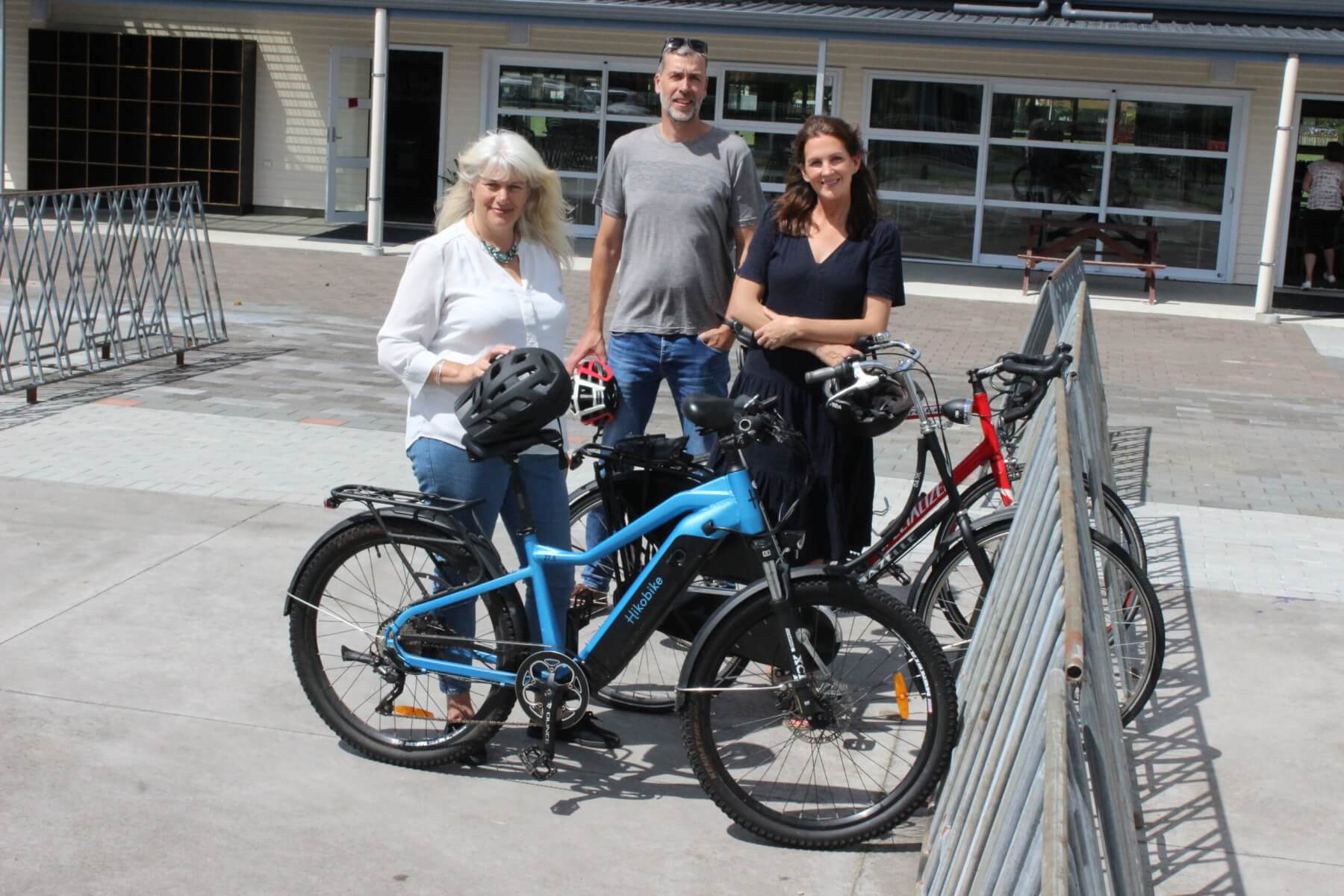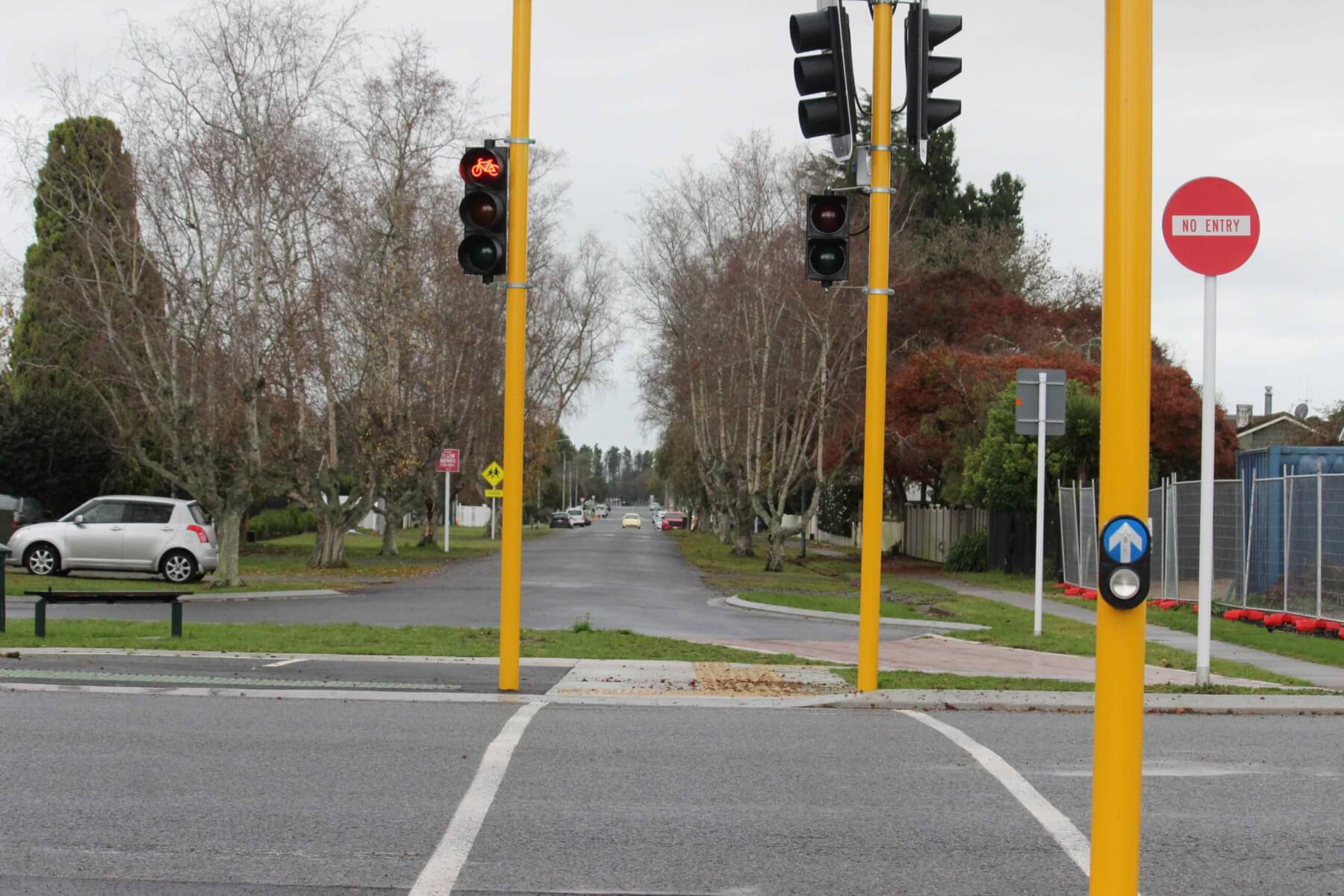
Looking north down Grey Street towards Cambridge Middle School which will be closed off to through traffic under a proposal to council. Photo: Mary Anne Gill.
Grey Street, north of Hamilton Road in Cambridge, will become a cul-de-sac and other streets and neighbourhoods made more cycle friendly, under recommendations made to the council by Cambridge Community Board.
At its meeting last week, the board considered a paper from Waipā District Council Transportation engineer Erik Van Der Wel which set out proposals for the design and construction of a government-funded pathway project.
The $10.215 million pathway would start at the Grey St end of the Hamilton Road cycleway, head east to Bryce Street and then south along Duke Street to Wilson and Victoria streets and ending at the High Level bridge.
“The pathway in the middle school section is in a complex street environment, so we have carried out extensive consultation to gain an insight from residents, the school community and the public on several design options,” said Van Der Wel.
Under the proposals presented to the public and interested parties, it was suggested making Clare Street outside the Cambridge Middle School a one-way street but that was rejected in part because the school said there was still a need for on street parking.
In its submission Bicycle Revolution, a group of people committed to getting people onto bicycles, said it wanted Cambridge to be a better place to cycle.

Olympic gold medallist and Te Awa River Ride trail manager Sarah Ulmer on the Te Awa River Ride track between the Velodrome and Hooker Road. Photo: Mary Anne Gill
Spokesperson Sarah Ulmer told the board that could include bringing traffic speeds down to 30km/hr so vulnerable users could mix safely with traffic.
The group also wanted to see the cycleway extended to Williams Street with a low speed, safe environment caused by intersections designed to make them cycle friendly streets.
The Ministry of Education also supported a Grey Street cul-de-sac and a new footpath on Clare Street to Bryce Street.
Public submitters were evenly split over the Clare Street proposal while the majority supported a cul-de-sac. There were concerns about where the redistributed traffic would go.
And middle school students wanted separated paths for cyclists to avoid conflict with pedestrians. They valued safe road crossing points including signals and slower traffic speeds.
Board members Elise Badger and Alana Mackay said they were pleased with the feedback which gave them a steer on what the public thought.
“We’re all going to have to change our behaviour,” said Badger.
Van Der Wel said the council had budget for hard infrastructure and with its existing collateral – planter and wooden boxes left over from the Streets for People trial three years ago – could create a cycle friendly environment around the school.
The funding came from the government’s Climate Change Emergency Response Fund run by Waka Kotahi – New Zealand Transport Agency.
Where you have got busy streets and lots of traffic, Waka Kotahi fully supported the kind of cost effective initiatives canvassed by Bicycle Revolution and the public.
“Waka Kotahi are very much about quick wins,” said Ulmer.
Cambridge’s grid street system made those options possible.
The Cambridge Pathway project is part of Waipā’s Urban Mobility programme to build a network of protected cycleways and footpath improvements enabling walking and cycling to become an attractive and convenient transport option.












